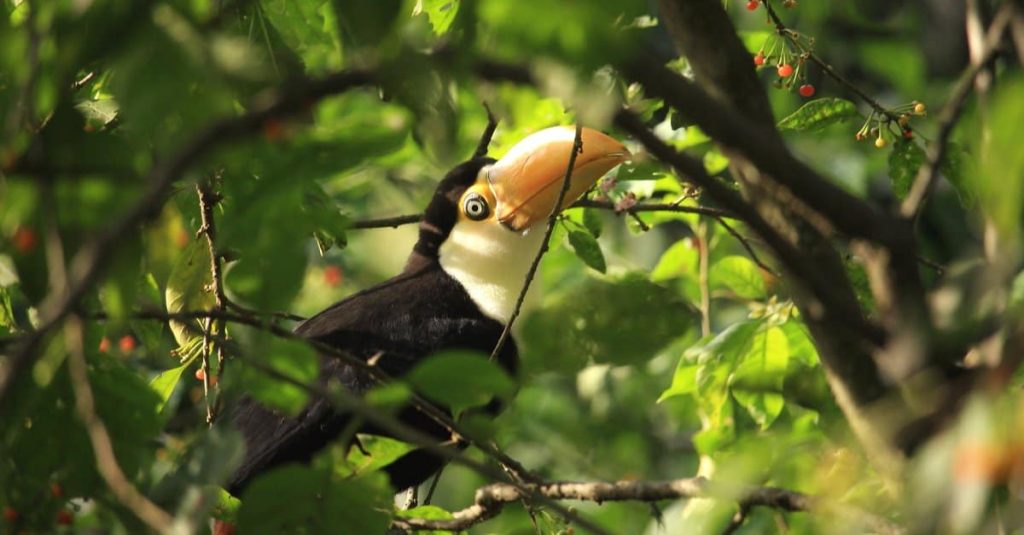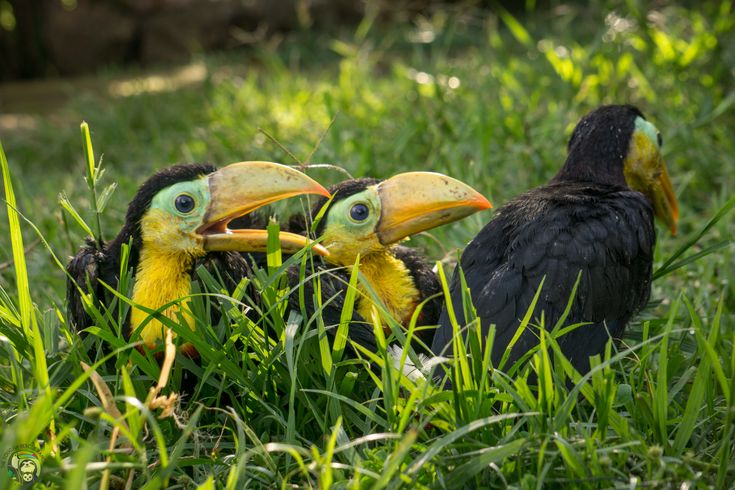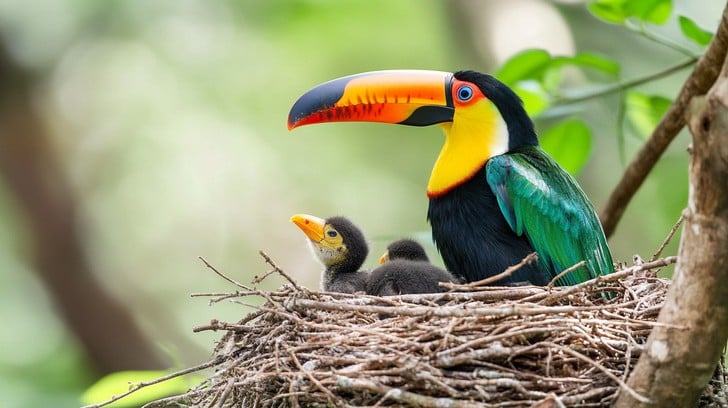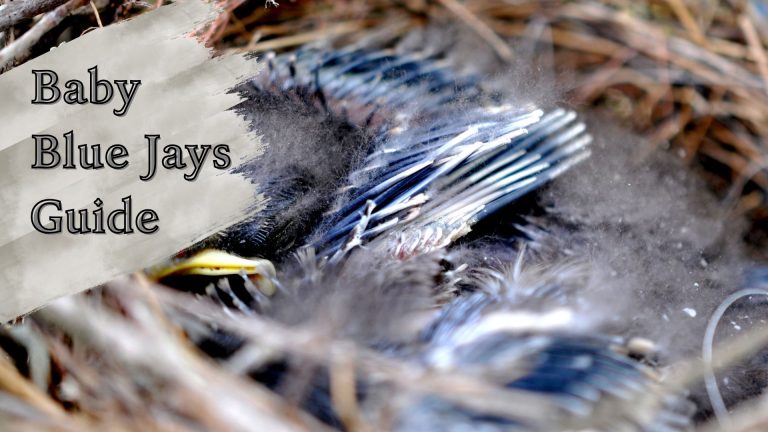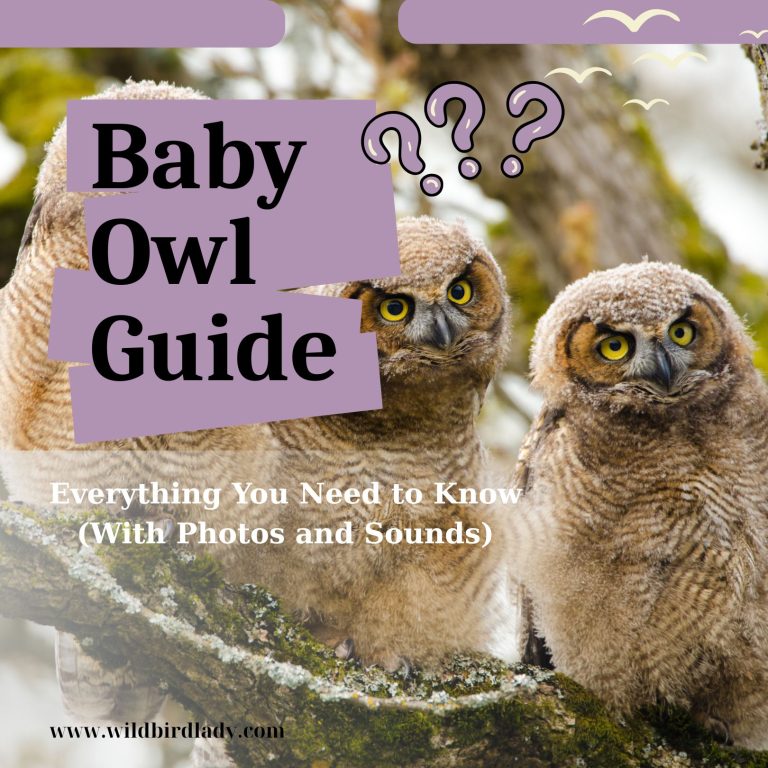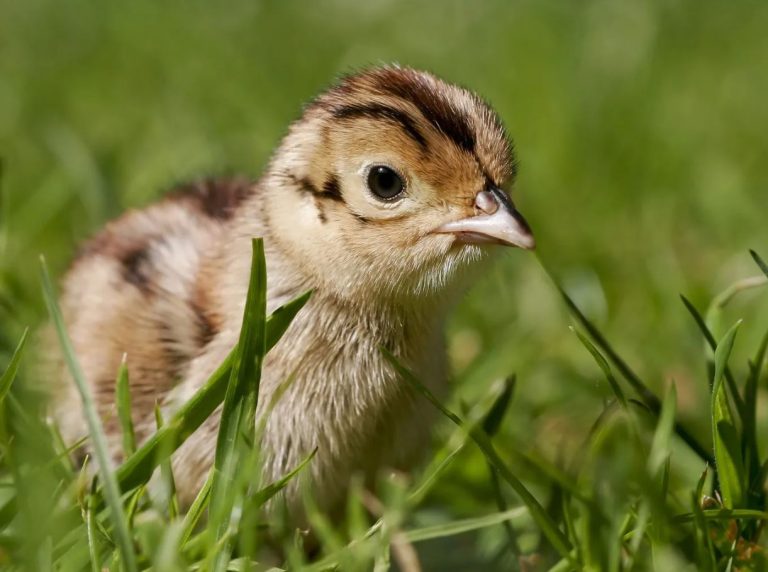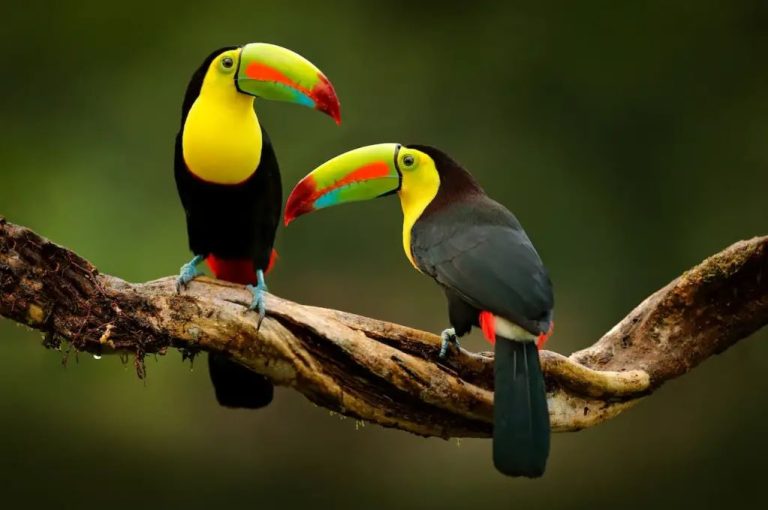Baby Toucan: What They Look Like, Eat & How They Grow in the Wild
By Rifat Ahmed | Birdwatching Enthusiast with 13+ Years of Experience
Toucans are among the most fascinating birds on the planet with their oversized, colorful bills and quirky personalities. But if you’ve ever wondered what a baby toucan looks like or how it grows up to become such a charismatic adult, you’re in for a delightful discovery.
As someone who has spent more than a decade observing tropical birds in their native environments, I’ve had the rare chance to watch toucans from their earliest days in the nest to adulthood. In this guide, I’ll walk you through everything you need to know about baby toucans, from their appearance and diet to development, parental care, and conservation. Let’s dive in!
What Is a Baby Toucan Called?
While there’s no unique term for a baby toucan like “chick” or “fledgling” that only applies to them, baby toucans go through the same stages as other birds:
- Hatchling (just hatched)
- Nestling (still confined to the nest)
- Fledgling (learning to fly)
- Juvenile (immature but mobile)
In this article, I’ll mostly use “baby toucan” to refer to nestlings and fledglings—when they’re still dependent on their parents and learning essential survival skills.
What Do Baby Toucans Look Like?
At birth, baby toucans look nothing like the vibrant adults we’re used to seeing in nature documentaries.
Key Features of Baby Toucans:
| Trait | Description |
|---|---|
| Bill | Soft, small, and pale in color—nothing like the large, colorful adult beak |
| Eyes | Closed at birth, open gradually over the first week |
| Feathers | Naked or covered in sparse, wispy down |
| Size | Roughly 0.5–1.5 inches long, depending on species |
| Body | Helpless, with underdeveloped legs and wings |
According to data from All About Birds, toucan hatchlings are altricial, meaning they are born blind, featherless, and completely dependent on their parents for warmth and food.
When Do They Start to Look Like Toucans?
Around 2–3 weeks after hatching, baby toucans begin developing pinfeathers. By the time they’re 4–6 weeks old, they start resembling miniature toucans with shorter, dull-colored bills and a growing coat of feathers.
Where Are Baby Toucans Born?
Toucans are cavity nesters, just like woodpeckers and some parrots. They don’t build elaborate nests but instead seek natural tree hollows or abandoned woodpecker holes in tropical rainforests.
Nesting Behavior:
- Location: High in the canopy, usually in the humid lowland rainforests of Central and South America
- Materials: Minimal—no twigs or leaves, just the bare wood interior
- Protection: The narrow nest entrance helps shield against predators
Toucans typically lay 2 to 4 eggs, and both parents take turns incubating them over the course of 16–20 days, depending on species.
What Do Baby Toucans Eat?
Here’s where things get truly fascinating. While adult toucans are considered omnivores—with a heavy preference for fruits—they also supplement their diets with a surprising variety of protein sources like insects, bird eggs, and small reptiles. But baby toucans have a different set of nutritional needs, especially in their earliest stages of life.
Because baby toucans grow rapidly in just a few short weeks, they need a high-protein, energy-dense diet. Unlike adult toucans that can easily digest fibrous fruit, hatchlings rely heavily on their parents to process food for them.
Baby Toucan Diet: What’s on the Menu?
During the first few weeks after hatching, baby toucans eat nothing but regurgitated food provided by their parents. This includes:
- Fruit pulp (pre-digested): Soft, sugary fruit like papaya, bananas, guava, and figs
- Insects: High-protein items such as grasshoppers, beetles, caterpillars, and ants
- Small vertebrates (occasionally): Tiny frogs, geckos, or even baby birds if available
- Egg yolks or cracked eggshells: For calcium and extra nutrients
Feeding Behavior: A Team Effort
Both toucan parents take turns feeding their chicks. The process is efficient and nurturing:
- Parent swallows food whole, storing it in their crop or stomach.
- Food is partially digested, softening it for the chick.
- The adult then regurgitates the contents into the open beak of the baby.
This method not only ensures the food is easier to digest, but also maintains a close bond between parent and chick. Unlike some birds that simply drop food into the nest, toucans deliver food directly and precisely—often with short, repeated visits throughout the day.
Growth-Based Feeding Adjustments
As the chicks grow, their digestive systems mature and their bills strengthen. Around the third to fourth week, parents begin offering:
- Larger fruit chunks (no longer fully pre-digested)
- Whole insects or larvae
- Small, soft-bodied prey to encourage chewing and pecking behavior
This gradual transition helps the chicks develop motor skills needed for independent foraging after they fledge.
By the time they leave the nest—typically around 6 to 8 weeks old—the young toucans are already capable of swallowing small fruit whole and catching slow-moving insects.
Nutritional Importance
It’s important to note that a baby toucan’s diet must be balanced between sugars (from fruit) and protein (from insects and animal matter). Too much fruit without sufficient protein can lead to developmental issues, particularly in muscle and feather growth.
This is why, in wildlife rescue centers or zoos, baby toucans are fed specially formulated diets that mimic what they would receive from their parents in the wild—often with added calcium and vitamins to support bone and beak development.
Growth Stages: From Hatchling to Fledgling
Let me break down the growth stages of a baby toucan based on what I’ve observed and confirmed through ornithological research:
Week 1:
- Eyes remain closed
- Naked or only light down present
- Feeds every 30–60 minutes
- Completely dependent on warmth and food
Week 2–3:
- Eyes begin to open
- First signs of feather sheaths (pinfeathers)
- Bill starts developing its shape, but still soft
Week 4–5:
- Feathers emerge, wings begin to flap
- Increasing mobility in the nest
- Starts pecking at food
Week 6–8:
- Fully feathered, looks like a smaller version of adult
- First flight attempts—officially a fledgling
- Begins following parents out of the nest
After Fledging:
- Parents continue feeding and training for 2–4 more weeks
- Young toucan gradually becomes independent
How Long Do Baby Toucans Stay With Their Parents?
Most toucan species keep their young close for up to 12 weeks post-hatch. The timeline breaks down roughly like this:
- 6–8 weeks in the nest
- 2–4 weeks post-fledging parental care
This extended period of parental investment is critical. Baby toucans need to learn foraging techniques, social behaviors, and flight control.
In species like the Keel-billed Toucan (Ramphastos sulfuratus), I’ve seen fledglings continue begging from parents weeks after leaving the nest!
Different Toucan Species: Do Their Babies Differ?
While all toucan chicks share similar developmental stages, there are differences in growth rate, nesting habits, and diet among species:
| Species | Bill Growth | Time to Fledge | Size at Birth |
|---|---|---|---|
| Toco Toucan | Fast | ~8 weeks | Largest chick |
| Keel-billed Toucan | Moderate | ~6–7 weeks | Medium size |
| Aracaris (smaller toucans) | Slower | ~5–6 weeks | Smallest chicks |
For example, the Toco Toucan, the largest species, produces relatively larger chicks that take longer to fledge, while Green Aracaris fledge quicker and weigh much less.
Are Baby Toucans Endangered?
While toucans aren’t typically on the brink of extinction, habitat loss poses a major threat to baby toucans.
Key Threats to Baby Toucans:
- Deforestation: Fewer old trees = fewer nesting cavities
- Illegal Pet Trade: Nestlings are targeted for their exotic appeal
- Predation: Snakes, monkeys, and birds of prey attack nests
Species like the Plate-billed Mountain Toucan are now near threatened, largely due to deforestation in Ecuador’s cloud forests. Conservation groups are working to preserve old-growth forests and protect nesting habitats.
You can follow updates from the Cornell Lab of Ornithology for the latest data on toucan populations and conservation efforts.
Can You Raise a Baby Toucan as a Pet?
Technically, it’s possible—but strongly discouraged.
Here’s why:
- They’re wild animals: Raising a baby toucan requires expert care, constant feeding, and a specialized diet
- They imprint on humans: Making later release into the wild nearly impossible
- It’s often illegal: Many countries ban the trade or possession of wild toucans
- They need space: Toucans are extremely active and need flight room and foraging opportunities
Instead of owning one, I encourage you to support wildlife centers or eco-tourism projects that protect toucans in their native habitat.
Fun Facts About Baby Toucans
Let’s end with some delightful trivia that always surprises people:
- Their bills grow rapidly. By the time they fledge, their bills have doubled in size—but still aren’t full-grown until several months later.
- They sleep curled up. Even as chicks, toucans tuck their bills under their wings and flip their tails over their heads to conserve heat.
- Siblings may compete. In rare cases, stronger chicks may outcompete their nestmates for food—though toucans are not known for siblicide like some raptors.
- Their calls are high-pitched. Baby toucans have surprisingly squeaky voices—nothing like the frog-like croaks or rattles of adults.
Final Thoughts From the Field
Observing baby toucans has been one of the most joyful experiences of my birdwatching life. Watching a helpless, pink-skinned hatchling transform into a dazzling, fruit-tossing jungle acrobat is nothing short of magical.
If you ever get the chance to visit the tropical rainforests of Costa Rica, Panama, or the Amazon Basin, keep an ear out for the gentle rattle of a toucan family hidden in the canopy. And if you see a young toucan practicing its flight, know you’re witnessing something rare and wonderful.
Read also: How Long Do Toucans Live? Discover the Secrets Behind Their Lifespan
❓ FAQ About Baby Toucans
1. What does a baby toucan look like?
Baby toucans are born blind, featherless, and with small, pale bills. They gradually develop feathers and bill color as they grow.
2. What do baby toucans eat?
They eat regurgitated fruit pulp, insects, and small animals provided by their parents to support rapid growth.
3. How long do baby toucans stay in the nest?
Most baby toucans stay in the nest for 6 to 8 weeks before fledging, depending on the species.
4. Do both toucan parents take care of the chicks?
Yes, both parents share duties like incubating the eggs and feeding the chicks until they are independent.
5. Can baby toucans be kept as pets?
It’s strongly discouraged. Toucans require special diets, large spaces, and are protected in many countries due to conservation concerns.


